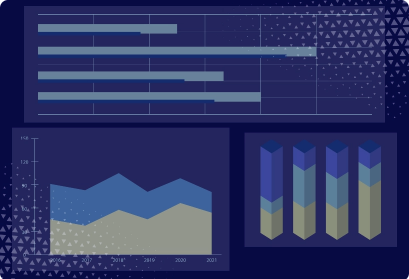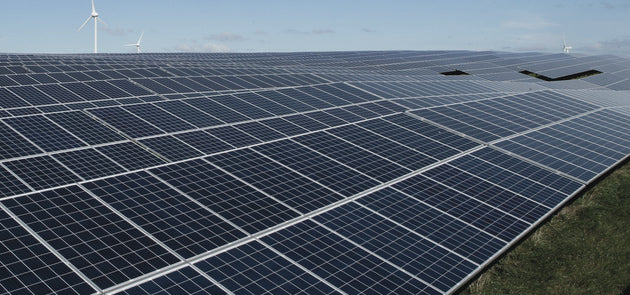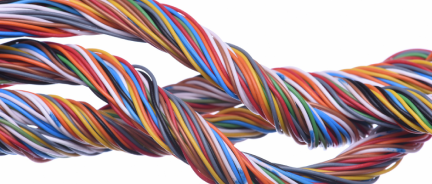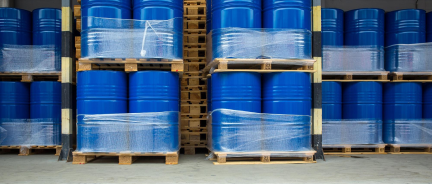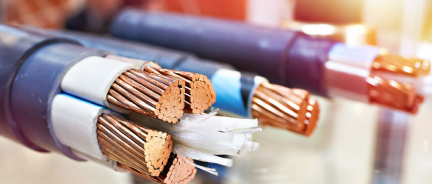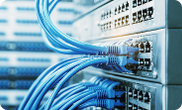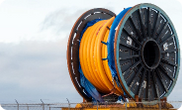Centros de metadatos: almacenando tu vida
Meta, antes conocida como Facebook, ha evolucionado de ser un gigante de las redes sociales a un líder en inteligencia artificial (IA), realidad virtual (RV) e infraestructura de metaverso . Si bien sus plataformas principales (Facebook, Instagram, WhatsApp y Messenger) siguen siendo clave para sus operaciones, su cambio estratégico ha impactado significativamente la infraestructura de su centro de datos .
Los centros de datos de Meta ahora manejan contenido de redes sociales y Servicios basados en IA, experiencias de realidad virtual y computación de alto rendimiento . La escala de la gestión de datos es enorme:
-
Más de 3 mil millones de usuarios interactúan en las plataformas Meta mensualmente.
-
Diariamente se procesan miles de millones de fotos, vídeos y mensajes .
-
Los modelos de IA que requieren una potencia computacional exponencial impulsan la personalización, la segmentación de anuncios y las aplicaciones emergentes del metaverso.
La trayectoria de Meta desde el arrendamiento de almacenamiento de terceros en 2004 hasta el desarrollo de una de las redes de centros de datos globales más avanzadas es un testimonio de su evolución en ingeniería.
Geografía de los centros de metadatos

De Facebook a Meta: ampliando la presencia
Inicialmente, los centros de datos de Facebook se concentraban en Estados Unidos . Con el paso de los años, la red se ha expandido a Europa y Asia . Con la transición de la compañía hacia la IA y el metaverso, una mayor expansión ha sido crucial.
Ubicaciones actuales de los centros de datos
📍Estados Unidos:
-
Granjas de servidores originales: Oregón, Carolina del Norte, Iowa, Texas, Nuevo México .
-
Gran expansión de IA y metaverso: Virginia, Nebraska, Ohio, Georgia, Utah, Alabama, Luisiana (nuevo centro de datos de 10 mil millones de dólares centrado en IA).
📍Europa :
-
Centros establecidos: Suecia, Dinamarca, Irlanda .
-
Expansión estratégica para infraestructura de IA de baja latencia .
📍Asia :
-
Singapur: presta servicios en la región Asia-Pacífico .
-
Se planean centros de desarrollo centrados en IA para apoyar a los mercados emergentes .
Cómo la expansión del centro de datos respalda el nuevo enfoque de Meta
-
IA y computación metaversa: los nuevos centros priorizan el entrenamiento de modelos de IA y las experiencias inmersivas .
-
Reducción de latencia: la expansión de los centros de datos perimetrales garantiza la entrega de contenido en tiempo real para aplicaciones de IA y VR .
-
Escalabilidad: a medida que crece la adopción del metaverso, se necesitará más capacidad de procesamiento y almacenamiento de alto rendimiento .
Del almacenamiento en redes sociales a las potencias de la IA
Los centros de datos de Meta ya no solo almacenan fotos, videos y mensajes. Ahora alimentan:
✅ Personalización impulsada por IA en Facebook, Instagram y WhatsApp.
✅ Funciones de IA generativa como chatbots impulsados por IA y herramientas de creación de contenido.
✅ Experiencias de VR y AR para el metaverso, incluidos Meta Horizon Worlds .
✅ Algoritmos de segmentación y recomendación de anuncios para su ecosistema publicitario.
Esta transformación requirió una revisión de la infraestructura , integrando clústeres de GPU centrados en IA , redes avanzadas y fibra óptica de alta velocidad .
Innovaciones en el centro de datos de Meta
Eficiencia energética impulsada por IA
🌱 Optimización de refrigeración con IA:
Meta utiliza algoritmos de aprendizaje de refuerzo para gestionar la eficiencia de refrigeración, reduciendo los costes energéticos:
-
Reducción del 20% en el consumo energético del ventilador de refrigeración.
-
4% menos de consumo de agua en todas las instalaciones.
Compromiso con las energías renovables :
-
100% de energía renovable para todos los centros de datos.
-
Asociación de energía geotérmica (Sage Geosystems) para diversificar las fuentes de energía.
🌱Diseño de hardware sostenible:
-
Meta continúa desarrollando chips de IA energéticamente eficientes para el procesamiento de datos.
-
Open Compute Project (OCP) : Meta comparte diseños de hardware de centros de datos con la comunidad tecnológica global.
Cómo Meta está rediseñando los centros de datos para la IA
Meta está reestructurando en gran medida sus centros de datos para soportar cargas de trabajo de IA, con importantes mejoras en:
💡Sistemas de refrigeración híbridos:
-
La refrigeración líquida directa al chip para GPU permite una disipación de calor eficiente , lo cual es crucial para las cargas de trabajo de IA.
-
La refrigeración por aire tradicional todavía se utiliza para las necesidades informáticas estándar, lo que reduce el desperdicio de energía.
💡 Vida útil extendida del hardware:
-
Meta ha ampliado el ciclo de vida de sus servidores y hardware de red de 4 a 5 años , mejorando la rentabilidad.
💡 Diseño de centro de datos centrado en IA:
-
Un nuevo centro de supercomputación de IA en Luisiana albergará 1,3 millones de GPU para respaldar el entrenamiento avanzado de modelos de IA.
-
Se han aumentado las construcciones de centros de datos modulares para escalar rápidamente la capacidad informática.
Red troncal de fibra óptica y cableado avanzado
Meta tiene dos redes troncales de fibra óptica :
🔹 Red troncal del centro de datos : conecta los centros de datos de Meta en todo el mundo.
🔹 Red troncal de Internet : conecta las plataformas de Meta con los usuarios finales.
Red de cable submarino para la expansión de la IA y el metaverso
Las redes de fibra óptica compatibles con IA son cruciales para el metaverso y los servicios de IA en tiempo real. Meta ha invertido en:
🌊 Proyecto Simba (África) – Expandiendo la conectividad global.
🌊 HAVFRUE (Europa - EE. UU.) – Un proyecto de fibra submarina conjunto con Google.
🌊 MAREA (España – US) – Red de fibra de alta velocidad con Microsoft.
Cableado de última generación en metacentros de datos
Meta ha innovado sus estrategias de cableado para garantizar conectividad de alta velocidad, eficiencia y sostenibilidad en sus centros de datos:
🔹 Rutas de fibra de alta capacidad : Meta invierte en nuevas redes de fibra óptica de larga distancia que conectan directamente sus centros de datos estadounidenses en Ohio, Virginia y Carolina del Norte, mejorando la resiliencia de la red.
🔹 Proyecto de cable submarino de 10 mil millones de dólares : un cable de fibra óptica submarino privado de 25.000 millas conectará a Estados Unidos, India, Sudáfrica y Australia , evitando regiones geopolíticamente inestables.
🔹 Arquitectura de estructura de centro de datos : el diseño de red de próxima generación de Meta mejora la escalabilidad y la eficiencia, optimizando el modo en que se procesan y distribuyen sus grandes cantidades de datos.
🔹 Iniciativas de cableado sostenible : Meta incorpora interconexiones ópticas de bajo consumo energético y redes de fibra de acceso abierto para reducir los costes de implementación y el impacto medioambiental .
Estos avances en cableado respaldan la infraestructura de inteligencia artificial de Meta, el desarrollo del metaverso y los objetivos de conectividad global .
El impacto económico y comunitario de Meta
Los centros de datos de Meta desempeñan un papel importante más allá de la tecnología. La empresa:
💼 Creación de empleos : cada nuevo centro de datos genera miles de empleos en la construcción y cientos de puestos operativos a largo plazo .
🏫 Invertir en comunidades locales : Meta financia escuelas locales, organizaciones sin fines de lucro y mejoras de infraestructura.
🌍 Promoción de la sostenibilidad : cada centro de datos está alineado con los objetivos de energía 100% renovable y trabaja con las redes eléctricas locales para reducir las emisiones.
Conclusión: El futuro de los centros de datos de Meta
La transición de Meta, de empresa de redes sociales a líder en metaverso e inteligencia artificial, ha transformado su estrategia global de centros de datos . Conclusiones clave:
✅ La IA y la computación de alto rendimiento impulsan la expansión de la infraestructura.
✅ Los centros de datos sostenibles y energéticamente eficientes respaldan el crecimiento a largo plazo.
✅ La innovación en fibra óptica garantiza una conectividad perfecta.
✅ Los sistemas de cableado avanzados permiten el procesamiento de IA y la transferencia de datos ultrarrápidos.
✅ Los centros de datos perimetrales y las redes submarinas mejoran el alcance global.
A medida que la IA, la realidad virtual y el metaverso evolucionan, los centros de datos de Meta seguirán siendo el centro de su transformación tecnológica, almacenando no solo nuestras vidas digitales, sino también impulsando la próxima generación de informática . 🚀
Si está construyendo su propia infraestructura de centro de datos, Nassau National Cable es su proveedor confiable de cableado eléctrico de alta calidad . Ofrecemos una amplia selección de cables para centros de datos con rápida disponibilidad para satisfacer las necesidades de su proyecto.


